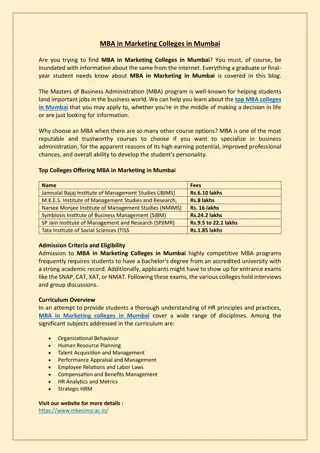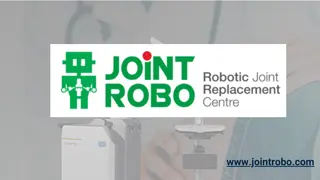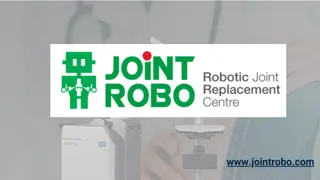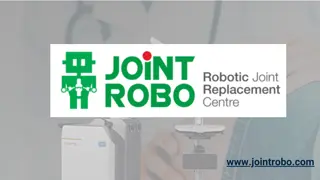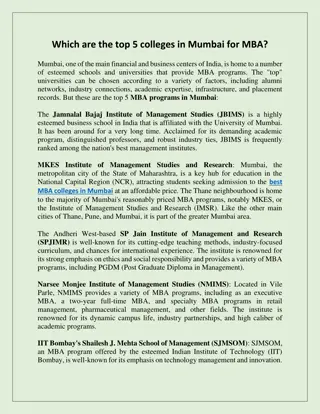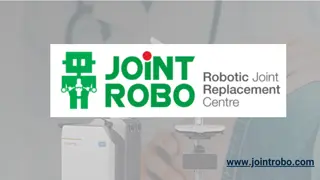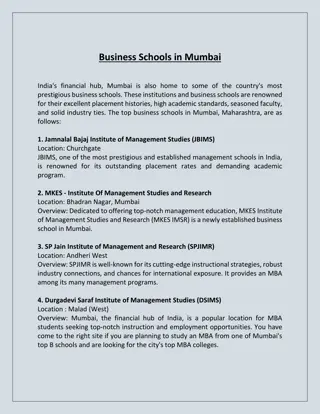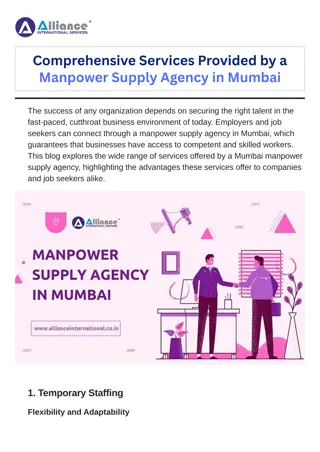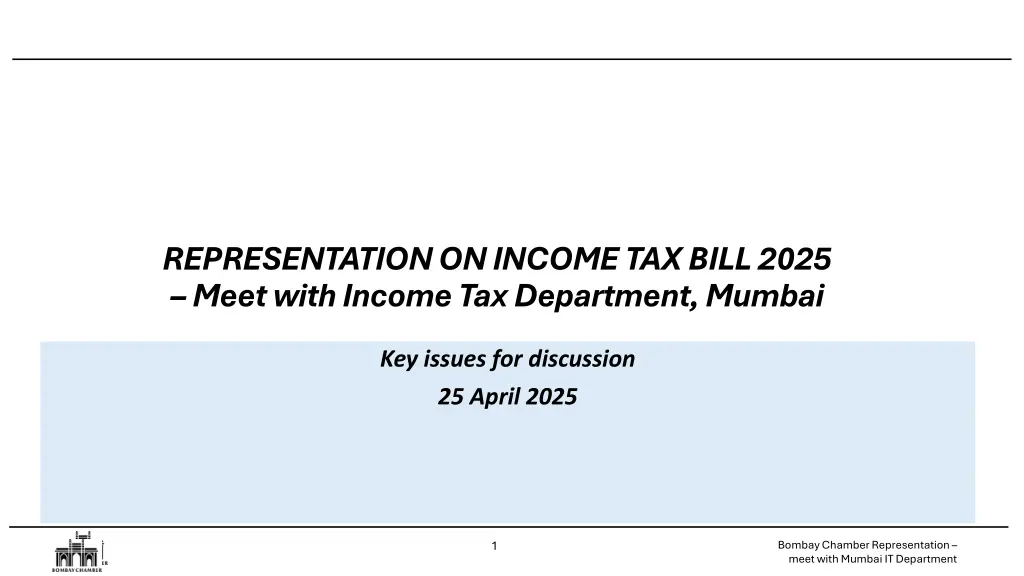
Key Issues on Income Tax Bill 2025 for Discussion with Mumbai IT Department
Addressing inconsistencies in the Income Tax Bill 2025, the representation highlights the removal of clause 45(2)(c) regarding DSIR-approved in-house R&D facilities and reinstatement of the deduction under clause 148 for companies under the 22% Concessional Tax Rate. It emphasizes the need to align provisions with ITA 1961 and ensure policy consistency to avoid potential ambiguities and adverse impacts on corporate dividends.
Download Presentation

Please find below an Image/Link to download the presentation.
The content on the website is provided AS IS for your information and personal use only. It may not be sold, licensed, or shared on other websites without obtaining consent from the author. If you encounter any issues during the download, it is possible that the publisher has removed the file from their server.
You are allowed to download the files provided on this website for personal or commercial use, subject to the condition that they are used lawfully. All files are the property of their respective owners.
The content on the website is provided AS IS for your information and personal use only. It may not be sold, licensed, or shared on other websites without obtaining consent from the author.
E N D
Presentation Transcript
REPRESENTATIONON INCOME TAX BILL 2025 Meet with Income Tax Department, Mumbai Key issues for discussion 25 April 2025 Bombay Chamber Representation meet with Mumbai IT Department 1
Part A: Inconsistencies in ITB 2025 Part A: Inconsistencies in ITB 2025 vis vis- - - -vis ITA 1961 vis ITA 1961 Bombay Chamber Representation meet with Mumbai IT Department 2
Remove clause 45(2)(c) of ITB 2025 (DSIR approved inhouse R&D facility) and make Remove clause 45(2)(c) of ITB 2025 (DSIR approved inhouse R&D facility) and make consequential change in clause 200 (22% CTR) consequential change in clause 200 (22% CTR) Issue of concern Issue of concern Recommendation Recommendation S. 35(1) of ITA 1961 provides for deduction of revenue and capital expenditure (except land) incurred on R&D relating to business. Similarly, S. 35(2AB) of ITA 1961 grants deduction of revenue and capital expenditure (except land & building) incurred on in-house DSIR approved R&D facility. The deduction was allowed at the rate of 200% of expenditure which was gradually reduced to 100% from AY 2021-22 with reduction of corporate tax. Unlike, 35(1) of ITA 1961 , deduction u/s, 35(2AB) of ITA 1961 is subject to DSIR approval of (a) R&D facility and (b) annual R&D expenditure. With deduction u/s 35(2AB) restricted to 100%, it became redundant as expenditure could any way be claimed u/s 35(1) without any specific approval. Further, S.115BAA of ITA 1961 (S. 200 of ITB 2025) requires add back of entire deduction claimed u/s. 35(2AB) it is not restricted to quantum of weighted deduction over and above actual expenditure. Where DSIR approval is not obtained as aforesaid, the taxpayer does not claim any deduction u/s. 35(2AB) the taxpayer only claims deduction u/s. 35(1)(i) or s.35(1)(iv) which is not required to be added back for the purpose of s.115BAA. Clause 45(1) and clause 45(2)(c) of ITB 2025 correspond to S. 35(1) and 35(2AB) of ITA 1961 respectively. The provisions of s.35(2AB) of ITA 1961 are now academic as no weighted deduction is available under ITA 1961. Hence, it is suggested to delete its corresponding provision of clause 45(2)(c) of ITB 2025 to avoid potential ambiguities on its interplay with other provisions. Consequently, reference of S.45(2)(c) in S.200 should also be deleted Bombay Chamber Representation meet with Mumbai IT Department 3
Deduction under clause 148 of ITB 2025 (corresponding to S. 80M of ITA 1961) to be reinstated in Deduction under clause 148 of ITB 2025 (corresponding to S. 80M of ITA 1961) to be reinstated in 22% CTR 22% CTR Issue of concern Issue of concern Recommendation Recommendation Dividends received by an Indian company are not taxed if redistributed within a specified period under certain conditions. Companies under the ITA 1961 Concessional Tax Rate (CTR) regime, both at 22% (S. 115BAA) and 15% (S. 115BAB), can claim this deduction. However, clause 200 of ITB 2025 omits this benefit for companies under the 22% CTR, unlike those claiming the 15% CTR u/s 201 of ITB 2025, creating an inconsistency. This appears to be inconsistent with FAQs on Chapter XI which affirm no policy or rate changes in ITB (Refer QXI.4 & 5). The inadvertent omission will result in cascading impact of inter-corporate dividends adversely impacting companies who had opted for 22% CTR based on policy intent of being allowed such deduction Since there is no intent to change policy, it is recommended to reinstate the benefit of deduction for intercorporate dividends under clause 148 of ITB 2025 (corresponding to S. 80M of the ITA 1961) to companies claiming benefit of 22% concessional tax rate u/s 200 of the ITB 2025 (corresponding to S. 115BAA of ITA 1961). Bombay Chamber Representation meet with Mumbai IT Department 4
NIL TDS certificate facility to be reinstated NIL TDS certificate facility to be reinstated Issue of concern Issue of concern Recommendation Recommendation S. 197 of ITA 1961 provides for a facility to payee to obtain both lower TDS and NIL TDS certificate. S.195(3) of ITA 1961 provides NIL TDS certificate facility for non-resident payees Clause 395(1) of ITB 2025 continues the facility to obtain lower TDS certificate but makes no reference to NIL TDS certificate facility The NIL TDS certificate is generally obtained by foreign banks operating in India which relieves its customers from TDS compliance on all payments. It is also availed by entities subject to voluminous TDS on small ticket items, loss making entities or non-residents availing treaty benefits. Withdrawal of NIL TDS certificate facility will result in unnecessary TDS compliance burden, refunds and cost to Govt. in the form of interest on such refunds. Customers of foreign banks will need to obtain TAN, do TDS on each & every payment without threshold , file quarterly TDS returns and issue TDS certificates To avoid the administrative hassles of TDS compliance burden for payers and payees seeking refunds, it is recommended to reinstate provisions of facility of obtaining NIL TDS certificate under clause 395(1) of ITB 2025. Bombay Chamber Representation meet with Mumbai IT Department 5
Firms/LLPs not availing incentive deductions to be exempted from AMT Firms/LLPs not availing incentive deductions to be exempted from AMT Issue of concern Issue of concern Recommendation Recommendation S. 115JEE of ITA 1961 provides that AMT provisions applies only to persons who have claimed any of the specified deductions Chapter VIA-C S.10AA or S.35AD of ITA 1961. However an exception is made in respect of non-corporate persons if the adjusted total income (ATI) of such person does not exceed 20 lakh rupees Further credit of AMT paid in past years is allowed even in the year in which Taxpayer is otherwise excluded from the scope of AMT. The exception from levy of AMT for non-corporate persons is contained in clause 206(18) of ITB 2025 in following cases- Non-corporate taxpayers who have opted-in for new regime or Non-corporate in whose case ATI does not exceed 20 lakh rupees Consequentially, non-corporates like a firm/LLP who have only special incomes (for instance LTCG which is taxable at 12.5%) would now be subject to AMT @ 18.5% under ITB 2025, despite such persons not claiming incentive deductions Provisions in lines of S.115JEE of ITA 1961 should be introduced in clause 206(1) of ITB 2025, to restrict AMT applicability only to taxpayers claiming the specified deductions. Furthermore, clause 206 of ITB 2025 should be amended to allow taxpayers to set off AMT credit even if they are not liable for AMT in the year of set off. Bombay Chamber Representation meet with Mumbai IT Department 6
Reinstate the meaning of Associate Enterprise (AE) as defined earlier in Section 92A Reinstate the meaning of Associate Enterprise (AE) as defined earlier in Section 92A Issue Issue of of concern concern Recommendation Recommendation The definition of AE is divided under two parts under S.92A of ITA 1961 (S. 162 of ITB 2025): It is recommended that the well settled and accepted definition of the term Associated Enterprise be retained without any changes to avoid unintentional non-compliance and mitigate unwarranted litigation. Alternatively, objective criteria may be introduced in S.162(1) of ITB 2025 to enable the assessee evaluate the meaning of the term participation in the management or control or capital. In case there have been any instances of abuse of the provisions of S.92A, the following approach may be considered [while retaining the opening line for the purposes of sub-section (1) in S.162(2) instead of Without affecting the generality of the provisions of sub-section (1)" ]: 1. Expand the objective criteria listed in S.162(2) of ITB 2025 to address such instances/ expand the coverage of scenarios in which persons will be considered as associated enterprises; or 2. CBDT may exercise its powers and issue notifications as mentioned in S.92A(2)(m) to prescribe any relationship of mutual interest to expand the list of situations in which the persons will be deemed to be Associated Enterprises. 1. First part under S.92A in sub-section (1) defines the broad contours of the term and is based on participation in management or control or capital ; and The second part under S.92A in sub-section (2) contains a deeming provision, giving specific illustrations [clauses (a) to (m)], to indicate when two enterprises will be deemed to be AEs. 2. S.92A(2) of ITA 1961 starts with for the purposes of sub-section (1) which is proposed to be replaced with "Without affecting the generality of the provisions of sub-section (1)" in S.162 of ITB 2025. This leads to a possible interpretation that the provisions of Clause 162(1) and 162(2) of ITB 2025 [existing 92A(1) and 92A(2) of ITA 1961] are to be applied independently. S.92A was amended vide Finance Act 2002 by inserting the phrase for the purposes of sub-section (1) in beginning of S.92A(2). The memorandum to Finance Bill, 2002 clarified the purpose of amendment that for considering an enterprise as an AE of the other enterprise, not only conditions of S.92A(1) but also atleast one of the clauses of S.92A(2) must also be satisfied. The Karnataka HC in the case of PCIT that the provisions of S.92A(1) and S.92A(2) are interlinked and have to be read together. In case the provisions are read independently, then one of the provisions would be rendered otiose which is impermissible in law in view of the well settled rule of statutory limitation. PCIT v v. . Page Page Industries Industries Ltd Ltd. . [ [2021 2021] ] 124 124 taxmann taxmann. .com com 605 605 (Kar (Kar. .) ) held The proposed change in S.92A(2) of ITA 1961 (S. 162(2) of ITB 2025) will be a significant departure from the existing provision resulting in widening the meaning of AE and making it subjective. This will result in modification to the settled law by widening the scope of applicability of TP provisions leading to increase in the cases of unintentional non-compliance and litigation due to differences in interpretation (in the absence of objective criteria in S. 92A(1) of ITA 1961 (S.162(1) of ITB 2025). Bombay Chamber Representation meet with Mumbai IT Department 7
Part B: Recommendations for further Part B: Recommendations for further simplification, reducing litigation simplification, reducing litigation and compliance burden and compliance burden Bombay Chamber Representation meet with Mumbai IT Department 8
Converge to single tax regime for all taxpayers Converge to single tax regime for all taxpayers Issue of concern Issue of concern Recommendation Recommendation Currently, there are multiple tax regimes: In case of domestic companies Without incentives and deductions CTR @ 22% u/s. 115BAA CTR @ 15% u/s. 115BAB for new manufacturing co s (sunset date 31 March 2024). CTR @ 25% u/s. 115BA for manufacturing co s (now redundant with lower tax rate u/s. 115BAA). With incentives and deductions Tax rate @ 25% for small companies with t/o less than 400 crores. Normal tax rate @ 30% Normal tax rate of 30% is relevant for existing companies with unexpired tax holiday period or unabsorbed losses from incentive deductions or unabsorbed MAT credit till they expire or are fully absorbed Co-operative societies have the following options: Concessional tax rate @ 15% for new manufacturing co-operative societies (sunset date of 31 March 2024) Normal slab rates with MMR of 30% on total income more than INR 20,000 MAT @ 15% u/s. 115JB for companies and AMT @ 18.5% u/s. 115JC for non- corporates claiming incentives & deductions ITB proposes to continue with above referred multiple regimes Income tax law can be simplified by removal of multiple tax regimes. Suggested tax structure could be: For domestic corporates, retain a two-tier tax regime Tax rate @ 22% without incentives and deductions Grandfathering of concessional tax rate @ 15% for new manufacturing companies without incentives & deductions (sunset date of 31 March 2024) Grandfathering of 30% tax rate with incentives & deductions for existing companies on transitional date till expiry of their tax holidays Rationalise tax rate for co-operative societies to 22% without incentives & deductions (with grandfathering for new manufacturing co-operatives @ 15%) Remove MAT & AMT and allow accumulated credits to be set off against new tax regime Bombay Chamber Representation meet with Mumbai IT Department 9
Remove ICDS to simplify income computation Remove ICDS to simplify income computation Issue of concern Issue of concern Recommendation Recommendation Income Computation and Disclosure Standards (ICDS) was notified to harmonise accounting standards and computation of total income However, most ICDS adjustments lead to deferral of recognition of expenditure/losses and preponement of income recognition Example Mark-to-Market (MTM) losses, Borrowing cost capitalisation, valuation of securities on category wise basis, etc Interplay between Ind-AS and ICDS often results in complex adjustments most of them being timing differences Example - Ind-AS 115 provides complex rules for revenue recognition by disintegrating the obligations under a contract whereas ICDS requires either Percentage of Completion or Completed contract method. ICDS is not an international best practice Most countries like UK, France, Singapore, etc provide for specific tax adjustments for certain IFRS fair value adjustments whilst largely adopting IFRS for tax purposes UK, Singapore, etc provide extensive guidance notes to taxpayers on IFRS tax adjustments. It is recommended that ICDS may be removed and specific tax rules may be provided in the Act itself (with detailed guidance in CBDT Circulars) to address Ind-AS fair value adjustments Bombay Chamber Representation meet with Mumbai IT Department 10
Omit s.43B(h) of ITA 1961 (clause 37(2)(g) of ITB) which disallows delayed payments to MSEs Omit s.43B(h) of ITA 1961 (clause 37(2)(g) of ITB) which disallows delayed payments to MSEs Issue of concern Issue of concern Recommendation Recommendation S.43B(h) was introduced by Finance Act 2023 from AY 2024-25 (corresponding provisions are retained in clause 37(2)(g) of ITB 2025) with wholesome intent to improve cash flow and liquidity for Micro & Small Enterprises (MSEs). It disallows belated dues paid to MSEs beyond time limit of maximum 45 days specified in s.15 of MSME Act and allows deduction in year of actual payment. While the provision was introduced with good intent to provide benefit to MSE sector, it has actually turned counterproductive to MSE sector. Large companies in private sector prefer non-MSE vendors to avoid the disallowance which has led to many MSE vendors giving up their Udyam registration in order to retain business. It also adversely impacts the MSME taxpayers themselves when they have to make payments to MSEs. With increase in turnover & investment limits by 2 to 2.5 times for enterprises to qualify as micro or small w.e.f 1 April 2025, larger number of enterprises will face such challenge of getting business from large companies. Hence, it is recommended that clause 37(2)(g) of ITB 2025 may be omitted to revert to the position prior to Finance Act 2023. Bombay Chamber Representation meet with Mumbai IT Department 11
Align turnover limit for presumptive taxation u/s. 44AD with MSME Act for micro enterprises Align turnover limit for presumptive taxation u/s. 44AD with MSME Act for micro enterprises Issue of concern Issue of concern Recommendation Recommendation S.44AD of ITA 1961 (corresponding to clause 58 of ITB 2025) provides for presumptive taxation of business income for small taxpayers (being individuals, HUF or partnership firm) which reduces compliance burden of maintaining books and litigation on allowances & deductions. The business income is presumptively computed at 8% of turnover (6% if sales are through banking channels/electronic mode). The turnover limit for availing such presumptive taxation scheme is Rs. 2 Cr. Higher limit of Rs. 3 Cr applies if cash transactions are less than 5% of total receipts and payments. W.e.f 1 April 2025, the turnover limit for classification as micro enterprises is enhanced from INR 5 Cr to INR 10 Cr under MSME Act To align the presumptive taxation scheme with turnover limit for micro enterprises, it is recommended that the turnover limit of clause 58 of ITB 2025 may be increased to Rs. 10 Cr. This will enable all micro enterprises to avail the presumptive scheme and reduce compliance burden for them. Bombay Chamber Representation meet with Mumbai IT Department 12
Scheme for Taxation of Non Scheme for Taxation of Non- -Fungible Tokens (NFT s) Fungible Tokens (NFT s) Issue of concern Issue of concern Recommendation Recommendation S.115BBH of ITA 1961 (corresponding to clause 194 [Table: S. No. 4] of ITB 2025) deals with taxation of Virtual Digital Asset (VDA) which provides for onerous tax implications of 30% tax rate on net gain without set off of losses S.2(47A) (b) defines VDA to mean, inter alia, a non-fungible token (as notified by Central Government) or any other token of similar nature, by whatever name called . A non-fungible token (NFT) is a unique digital record of an underlying asset which can either be a physical asset (say a painting) or a digital asset (say music video) on the blockchain. Prior to insertion of S. 115BBH, tax implications on sale of NFT was dependent on the tax implications of the sale of the underlying digital/physical asset tagged to the NFT. Pursuant to Notification No. 75, NFTs relating to intangible/digital asset are notified NFTs qualifying as VDA and NFTs relating to physical asset are excluded NFTs. As a result if NFT attached to say M. S. Dhoni s bat is transferred, it is subject to normal tax treatment. On the other hand, if NFT is attached to digital photo of the same bat, then it is subject to special/stiff tax treatment u/s 115BBH. The discrimination of NFTS based on physical or digital asset is unwarranted as NFTs in digital assets is very similar to NFTs in physical assets. NFTs are not comparable to bitcoin or Ethereum which are not backed by an underlying asset International experience also supports that NFTs are provided similar treatment as underlying assets. Mere tokenization of an intangible asset cannot be a basis to attract onerous consequences. In fact, taxation of NFT is harsher when compared to speculative incomes. Loss from speculative transactions can be set off against speculative income but loss on NFT cannot be set off against gain on NFT. This would discourage transactions in the digital and blockchain space which would be against the intent of the Government to provide a boost to the digital economy. It is submitted NFTs may be kept out of VDA tax regime under s.115BBH of ITA 1961 (corresponding to clause 194 [Table: S. No. 4] of ITB 2025) for the time being. It can be reconsidered in future after compiling relevant economic data and assessing the risks from tax policy perspective. In the interregnum, if the Government is keen to keep track on NFT transactions, it may be clarified that it is covered by TDS u/s. 194Q of ITA 1961 (corresponding to 393(1)[Table: S.No. 8(ii)] of ITB 2025) dealing with purchase of goods . Bombay Chamber Representation meet with Mumbai IT Department 13
Simplification of domestic TDS / TCS regime Simplification of domestic TDS / TCS regime Issue of concern Issue of concern Recommendation Recommendation Currently, there are multiple rates for TDS and TCS. There are 32 different provisions covering 37 types of payments with rates varying from 0.1% to 30% causing difficulty in compliance. It is recommended to relook at the TDS/TCS provisions with an objective to- Simplifying and reducing the overlap in TDS compliance Avoiding cash flow blockage for the industry and cost by way of interest on refunds for the Government Bringing in parity in rates and restricting it to say two or three rates only as follows :- a) b) Salary Lotteries, online games and horse race winnings All existing TDS sections that provide for TDS rate of <5% All other payments Normal slab rates 30% c) Existing rates (<5%) or uniform rate of 1-2% 2%-4% d) S. 194Q of ITA 1961 (corresponding to Sl. No 8(ii) of Table under clause 393(1) of ITB 2025) applies on purchase of goods. S. 194Q introduced with the intent of collecting information for widening of tax base is perceived as being onerous The entities with threshold limits of Rs. 10 Cr turnover and/or Rs. 50 lakhs transaction value are already within GST regime and relevant information is populated in Form 26AS from GST returns. It is recommended that S. 194Q be made applicable only to payees who are not registered with GST. This will then align with the Government s intention of widening and deepening the tax net. Bombay Chamber Representation meet with Mumbai IT Department 14
Remove onerous compliance Remove onerous compliance w.r.t. w.r.t. issuance of TDS / TCS certificates issuance of TDS / TCS certificates Issue of concern Issue of concern Recommendation Recommendation S. 203 / S. 206C(5) of ITA 1961 r/w rule 31 / 37D mandates issuance of TDS / TCS certificate by every deductor / collector within 15 days from the due date for furnishing quarterly statement of TDS / TCS. Clause 395(4) of new ITB 2025 contains similar provisions. S. 272A of ITA 1961 imposes penalty on failure to make such compliances. Currently, TDS/TCS certificates in Form 16A/27D to be issued are to be downloaded from Income Tax website. The same is on the basis of the TDS/TCS return filed by the deductor which gets reflected in Form 26AS/AIS of the payee. Hence, the requirement of issuing TDS/TCS certificates has become obsolete in majority of the cases. The need for issue of TDS/TCS certificates in the present circumstance exists only in following three cases viz. Salary TDS certificates in Form 16 This is an important document for salaried employees (including pensioners) which is used for many commercial transactions like borrowing loan, buying insurance policies, etc. Non-residents Issue of TDS certificate is essential to enable them to claim FTC in their home country. Higher TDS/TCS under S.206AA/s.206CC cases where PAN is not available since the TDS/TCS cannot be populated in Form 26AS in such cases. The requirement to issue TDS / TCS certificate can be done away for bringing in ease of compliance. However, exceptions should be made for (A) Salary TDS certificates in Form 16 (B) TDS certificates to non-residents (C) TDS/TCS certificates where PAN is not available (D) in any other case, where the deductee / collectee makes a specific request to deductor/collector in form (which can be prescribed by rules) to issue TDS/TCS certificate Clause 395(4) of ITB 2025 may be amended accordingly Bombay Chamber Representation meet with Mumbai IT Department 15
Address implementation issues for TDS on business perquisites (S.194R) Address implementation issues for TDS on business perquisites (S.194R) Issue of concern Issue of concern Recommendation Recommendation FAQ 1 of Circular No. 12/2022 states that S. 194R applies to a benefit or perquisite irrespective of whether such benefit is chargeable to tax. It suggests that S.194R can apply even where the benefit is taxable u/s. 41(1) of ITA. If FAQ 1 of Circular No. 12/2022 is applied on literal basis in conjunction with FAQ 2 & 3, then TDS u/s. 194R will become a residual or catch all TDS provision which covers all payments which are not already covered by other TDS provisions. FAQ 1of Circular No. 12/2022 may be reconsidered, and it may be clarified in ITB 2025 that TDS on business perquisite is applicable only to payment of benefit or perquisite which is taxable under clause 26(2)(f) of ITB 2025 (s. 28(iv) of ITA 1961) and should not cover transactions under clause 38(1)(a) of ITB 2025 (s. 41(1) of ITA 1961) FAQ 1 of Circular No. 18/2022 has granted exemption from TDS on waiver/write off/one time loan settlement by 10 categories of banks/financial institutions. This raises apprehension for other write offs (e.g. write of trade debts in normal course of business for all industries) Imposition of TDS obligation will create huge practical challenges and double whammy of loss on write off as also TDS burden. On lines of FAQ 1 of Circular No. 18/2022, it may be clarified that any write off of debt whether unilateral or through negotiated settlement or under IBC is not a benefit or perquisite arising from business or exercise of profession and hence not liable to TDS under clause 393(1)[Table: S.No. 8(iv)] of ITB 2025 (s. 194R of ITA 1961). FAQ 4 of Circular No. 12/2022 clarifies that free samples would not fall under relaxation provided to sales discount, cash discount, rebate or quantitative discount referred in first three paras of FAQ 4. It further provides illustration of free medicine samples to medical practitioners as transaction liable to TDS u/s. 194R. Distribution of free samples is a normal practice of trade and thus cannot be considered a benefit. It was statutorily clarified in erstwhile Fringe Benefits Tax that free samples is not a fringe benefit. TDS on free samples is not justified since it does not represent benefit or perquisite for the recipients like distributors or retailers who use them for sales promotion and not for any personal benefit. It should be clarified that TDS under clause 393(1)[Table: S.No. 8(iv)] of ITB 2025 (s. 194R) will not apply on free samples distributed to supply chain intermediaries for demonstration to customers and in compliance with statutory guidelines, if any. Bombay Chamber Representation meet with Mumbai IT Department 16
Address implementation issues for TDS on business perquisites (S.194R) Address implementation issues for TDS on business perquisites (S.194R) Issue of concern Issue of concern Recommendation Recommendation FAQ 7 of Circular No. 12/2022 clarifies that any expenditure which is the liability of a person carrying on business or profession, if met by the other person, is in effect benefit/perquisite by the second person to the first person in the course of business/profession. Reimbursement of expenditure necessarily required to be incurred for providing services to client cannot be a benefit/ perquisite. FAQ 2&3 of Circular No. 18/2022 has clarified that TDS u/s. 194R does not apply on reimbursements to pure agents or where TDS is made u/s. 194C or 194J as per FAQ 30 of Circular No. 715/1995 on payments to contractors or professionals. It should be clarified in clause 393(1)[Table: S.No. 8(iv)] of ITB 2025 that reimbursement of personal expenses incurred by the service provider is a benefit or perquisite liable to TDS and not otherwise. Reimbursement of business/profession related expenses (like reimbursement of property taxes, water charges, electricity, etc to landlords of rented premises) may be clarified to be not covered by TDS clause 393(1)[Table: S.No. 8(iv)] of ITB 2025 (s. 194R of ITA 1961). FAQ 4 of Circular 12/2022 states that Sales discounts, cash discounts or rebates allowed to the customers from the listed retail price represent lesser realisation of the sale price itself. To that extent purchase price of customer is also reduced. In normal trade practice prevalent in FMCG industry, the sales discounts or rebates are generally passed on to the customers via credit notes which could also be in nature of post-sales or target- linked discounts. However, the use of the word listed retail price is causing ambiguity in interpretation in scenarios where discounts lead to a lower purchase price but is not linked to a specific product (e.g., cash discount or target-linked discounts) or may not be passed on to the end consumer in the chain (e.g., volume discount or other such trade discounts). The Finance Act 2023 has expanded scope of s.28(iv) & s.194R to monetary benefits which raise ambiguity whether such trade discounts are liable to TDS u/s. 194R. In many cases, such discounts are directly passed to end-customers or downstream intermediaries by way of monetary payments to ensure that they are not retained by intermediaries. Therefore, to avoid ambiguity, it may be clarified that any kind of sales discounts, trade discounts, volume discounts or adjustments by way of credit notes, which will effectively reduce the purchase price of the buyer, are outside the ambit of TDS under clause 393(1)[Table: S.No. 8(iv)] of ITB 2025 (S.194R of ITA 1961). It may be clarified that discounts directly passed on to end- customers or downstream intermediaries by way of monetary payments are not covered by TDS under clause 393(1)[Table: S.No. 8(iv)] of ITB 2025 (s.194R of ITA 1961). Bombay Chamber Representation meet with Mumbai IT Department 17
Address implementation issues for TDS on business perquisites (S.194R) Address implementation issues for TDS on business perquisites (S.194R) Issue of concern Issue of concern Recommendation Recommendation FAQ 7 of Circular No. 18/2022 while seeking to clarify that TDS u/s. 194R does not apply to bonus and rights issue by widely held companies (i.e., company in which public are substantially interested as defined in clause 2(29) of ITB 2025 (i.e., s. 2(18) of the Act) has raised ambiguity and uncertainty on applicability of TDS u/s. 194R on similar issue of shares by closely held companies. The rationale provided in FAQ 7 of Circular No. 18/2022 for non- applicability of TDS (viz. there is no benefit to shareholders on bonus issue since their overall value and ownership remains unchanged and cost of acquisition of bonus shares is taken at NIL) equally applies to closely held companies. To remove the ambiguity and uncertainty for stakeholders, it may be clarified that bonus and rights issue by all companies whether widely held or closely held does not trigger TDS obligation under clause 393(1)[Table: S.No. 8(iv)] of ITB 2025 (s. 194R of ITA 1961) Bombay Chamber Representation meet with Mumbai IT Department 18
Introduce simplified TDS compliance for renting or purchase of immovable property from NRIs Issue of concern Issue of concern Recommendation Recommendation Any person responsible for paying any sum to a non-resident is required to deduct taxes at source u/s 195 of ITA 1961 [corresponding to S. 393(2)[Table: S.No.17] of ITB 2025] and make subsequent TDS compliance such as obtaining a TAN, filing TDS Quarterly Returns, etc. For this purpose, non-resident also includes an NRI who owns immovable property in India. Further, the payer may also be a individual/ HUF making a payment for personal purposes. Thus any payment to the NRI by way of rent or consideration for transfer of immovable property is subject to TDS u/s 195 of ITA 1961 or corresponding S. 393(2)[Table: S.No.17] of ITB 2025. S. 194-IA of ITA 1961 corresponding to S. 393(1)[Table: S.No. 3(i)] of ITB 2025 deals with TDS liability on payments to a resident transferor of immovable property (other than agricultural land). In this regard, S. 194-IA(3) of ITA 1961 [corresponding to S. 397(1)(c)(i) of ITB 2025] relieves the deductor for the requirement of obtaining a TAN and filing. Special provisions are also included for filing of a single payment challan- cum-TDS return in respect of such transactions. Unlike S. 194-IA of ITA 1961 corresponding to S. 393(1)[Table: S.No. 3(i)] and certain other provisions, where there is exemption for the deductor from obtaining a TAN and filing TDS Quarterly Returns, corresponding relaxation is not available in respect of payments to NRIs for rent/ transfer of immovable property. This places heavy compliance burden on small taxpayers renting premises from such NRI to obtain TAN and make TDS Quarterly Return Filing compliances Applicability of provisions of S. 397(1) of ITB 2025 [corresponding to S. 203A of ITA 1961] may be relaxed in respect of payments of rent/ consideration for transfer of immovable property to NRIs by individuals and HUFs not subject to tax audit. This can be achieved by introducing similar one time compliance in challan-cum- statement for payment of rent or purchase of immovable property from NRIs on the lines of currently existing procedure for payments to residents by individuals. Bombay Chamber Representation meet with Mumbai IT Department 19
Notify Notify bonafide bonafide cases to which s.56(2)(x) and s.50CA will not apply cases to which s.56(2)(x) and s.50CA will not apply Issue of concern Issue of concern Recommendation Recommendation The provisions of s. 56(2)(x) of ITA 1961 has been retained in clause 92(2)(m) of ITB 2025 and s. 50CA of ITA 1961 in clause 79 of ITB 2025. These are anti-abuse provisions to check underpricing of transactions but do not contain adequate safeguards for bonafide transactions where the price is lower than Rule 11UA value for genuine reasons. Pursuant to industry representations, the Finance (No.2) Act 2019 amended s.50CA and s.56(2)(x) to give power to CBDT to notify cases to which these provisions will not apply. CBDT has issued Rule 11UAC and 11UAD. However, the CBDT has used this power very sparingly to remove hurdles in PSU divestment like Air India, ILFS/ IDBI restructuring, etc. Following are Illustrative cases where bonafide transactions face tax hurdles u/s. 56(2)(x) and/or 50CA :- Fresh issue of shares in scenarios like Initial Public Offer (IPO), private placement, rights, bonus, etc. Investment made by holding company into its wholly owned subsidiary (domestic as well as foreign company) or other intra-group reorganization Time lag involved between fixing up share price by the parties under an agreement and actual allotment / transfer of shares due to time taken in making regulatory compliances and / or seeking shareholder or regulatory approvals Transfer of shares of a listed company through an off-the-exchange transaction at a pre-determined value (where SEBI takeover code is applicable) Options or share warrants which are issued at a particular date giving option to the holder to subscribe for shares at a future date at the prefixed value which is generally at FMV on the date of issue of options/warrants (E.g. ESOP Trusts of unlisted companies). Conversion of an existing instrument into equity shares as per the terms specified at the time of issuance based on the valuations at that time Transfer or issue of shares or securities in case of corporate insolvency resolution process under IBC or stressed companies, whose book value of assets is much higher than the actual realizable value. Transfer of assets between relatives for consideration lower than FMV or on account of family settlement To codify that clauses 92(2)(m) & 79 of ITB 2025 (S. 56(2)(x) and 50CA of ITA 1961) do not apply in bonafide and genuine commercial transactions as supported by documentary proof. It is also recommended that Rule 11UAC and 11UAD be amended by way of a notification. Further, prior to the issue of Final Notification, it is recommended that a draft Notification should be published for stakeholders comments to ensure that all possible bonafide cases faced by industry get adequately represented in the Final Notification. Bombay Chamber Representation meet with Mumbai IT Department 20
Provide relief from unintended hardship created by Honble SC ruling in Nestles case Provide relief from unintended hardship created by Hon ble SC ruling in Nestle s case on MFN clause on MFN clause Issue of concern Issue of concern Way forward Way forward The Hon ble SC in Nestle s case, inter alia, held that even with reference to autonomous most favoured nation (MFN) clause already agreed as part of existing treaty where treaty and protocol are both notified, the MFN clause in terms of which beneficial provisions entered into with third country cannot be made applicable unless a third notification is issued. This has wide ranging ramifications on cases where MFN benefit under various tax treaties like France, Spain, Hungary, etc have been claimed in the past based on automatic MFN clause on lower tax rates for royalty/FTS or restrictive scope of FTS, etc There is risk of reopening of past cases u/s. 201(1) and/or 147 based on SC ruling which will unsettle all past transactions. Since most such transactions are on net of tax basis, the additional tax burden will fall on Indian industry. It will negatively impact the investment environment in India. The difficulty can be addressed by Government issuing Notifications to activate the lower tax rates for royalty/FTS or restrictive scope of FTS, etc. from the past dates from which they are intended to take effect. Such notifications giving benefit from past dates have been issued by CBDT in the past. Responding to industry representations, the Government issued a Notification on 19 March 2024 lowering tax rates under India-Spain treaty for royalty/FTS to 10% but with prospective effect from AY 2024-25 It is recommended, to collate the list of tax treaties contain automatic MFN clause and notify the same in Official Gazette from date of trigger event (from which they were intended to be applied by treaty negotiators of both countries). For instance, the more restrictive scope of FTS under make available clause may be notified for France, Hungary, Sweden, Spain, Belgium treaties It would provide certainty and transparency for both Indian and foreign entities involved in cross-border transactions and adopting such measures would reflect the government's commitment to fostering an equitable tax environment Bombay Chamber Representation meet with Mumbai IT Department 21
Improve interface with Central Processing Centre Improve interface with Central Processing Centre Issue of concern Issue of concern Recommendation Recommendation Taxpayers face persistent challenges on refunds, TDS credit and returns in automated CPC processing u/s. 143(1) (clause 270(1) of ITB 2025) Challenges in processing IT returns Anomalies in ITR utility and in CPC return processing software Statutory opportunity of prior intimation before making adjustment not given in many cases Non-consideration of taxpayer s response to prior intimation adjustments made mechanically Delays or refusal in carrying out rectifications Non-redressal of adjustments made u/s. 143(1) in subsequent scrutiny assessment Before making adjustment, give proper opportunity (including virtual hearing) to the taxpayer where requested Replies filed by taxpayer should be dealt by officers having tax domain knowledge. Reasons for rejections should be incorporated in the final intimation Address anomalies in ITR utility and CPC return processing software at the earliest Limit the scope of adjustments by CPC to apparent mistakes Instruct Faceless Assessment Unit to address adjustments u/s. 143(1) (clause 270(1) of ITB 2025) in scrutiny assessments Conduct stakeholder outreach programmes to identify common issues in e-processing of returns and system related issues Publish interpretational logics incorporated in processing systems to provide opportunity to professionals to point out flaws which preclude taxpayers from putting up valid or debatable claims Bombay Chamber Representation meet with Mumbai IT Department 22
Timely disposal of rectification petitions and orders giving effect to appellate orders Timely disposal of rectification petitions and orders giving effect to appellate orders Issue of concern Issue of concern Recommendation Recommendation S.154(8) of ITA 1961 ( clause 287(9) of ITB 2025) provides for time limit of 6 months for disposal of rectification applications S.153(5) of ITA 1961 (clause 286 (1) Sr. 10 of ITB 2025) provides for time limit of 6 months for giving effect to appellate orders (otherwise than for conducting fresh assessment or verification) (popularly called OGEs) S.244A(1A) of ITA 1961 ( clause 437 (4) of ITB 2025) grants additional interest of 3% p.a for delay beyond time limit provided u/s 153(5) of ITA. But in practice, such statutory time lines are seldom observed resulting in cash flow blockage for industry in terms of pending refunds and also higher interest cost for the Government. Prior to Budget announcement in July 2024, there was no digital process for such applications. Post July 2024, a digital process has been implemented but the pace of disposal is slow. It is recommended to expedite the disposal of rectifications and OGEs The additional interest of 3% p.a u/s. 244A(1A) may also be extended to delayed disposal of rectification applications Personal accountability measures may be introduced for delay in disposal of rectification/OGEs If rectification petition is not disposed within the stipulated time limit, then it may be statutorily provided that such rectification is deemed to be accepted Bombay Chamber Representation meet with Mumbai IT Department 23
Disposal from CIT(A) need to be in time bound manner Disposal from CIT(A) need to be in time bound manner Issue of concern Issue of concern Recommendation Recommendation Appeal disposals by CIT (Appeals) under new faceless regime is alarmingly low As per Standing Committee on Finance 9th Report dated 19 March 2025, about 5.50 lakh appeals involving disputed amounts of Rs. 18.16 lakh crores are pending before CIT(A) On an average, about 1400 cases are pending with each faceless CIT(A) and 1252 cases with each non-faceless CIT(A) (Refer CBDT s affidavit before Gujarat HC in Special Civil Application No. 6953 of 2020) Budget 2023 introduced new forum of JCIT(A) to expedite disposal of small cases but there is no significant improvement in speed of disposal To unclog the system it is recommended to - prioritise cases where submissions are already filed by the taxpayer since long - immediately take up for virtual hearing and disposal; Provide monthly disposal target to be monitored by CBDT and set up a separate technical unit for faceless appeals to assist JCIT(A)/CIT(A) on legal/technical issues. Else, leverage the existing technical unit in faceless assessment. Though the notification prescribes stay of demand once 20% of the demand is paid by assessee, however the Department s IT system recovers the full demand automatically from subsequent refunds. Appropriate mechanism be put in place to ensure that recoveries of demand is not more than 20% of demand in assessment. Grant complete stay of demand when the matter is covered by Tribunal order in appellant s own case, or where there is a favourable judgement of high court , or, in any other case which CIT(A) deems fit. Do not charge interest to taxpayer if the delay beyond persuasive time limit of one year is not attributable to the taxpayer Bombay Chamber Representation meet with Mumbai IT Department 24
Address anomalies in presumptive taxation scheme for NR in electronics sector Address anomalies in presumptive taxation scheme for NR in electronics sector Issue of concern Issue of concern Recommendation Recommendation While the introduction of a presumptive tax regime for NRs engaged in providing services or technology to resident companies involved in manufacturing electronics products is welcome, the provision suffers from certain anomalies which may make it unattractive. S. 44BBD(1) requires non-resident taxpayers to provide services or technology "in manufacturing, raising questions about the inclusion of offshore services in the presumptive tax regime. Section 44BBD(1) and (2)(a) and (b) refer to provision of 'services or technology by the non-resident to claim benefit. The absence of 'or both may lead to an interpretation that S. 44BBD excludes scenarios where composite services and technology are provided. Sl No. 6 of Table under clause 67(2) of ITB contains similar provisions. The intent of the provision is to offer certainty to non- residents involved in development of India's electronics industry. It does not suggest limiting the scope to onshore services only. To align with object providing certainty and clarity to taxpayer, it is recommended to omit "in India" after the phrase "providing services or technology," ensuring the inclusion of both onshore and offshore services for electronics manufacturing in India. To avoid any misinterpretation, it is recommended to insert orboth after technology to make it clear that composite services of services and technology will also qualify for the presumptive regime. Similar approach is seen in various other provisions of the Act which explicitly include 'or both (e.g. S. 9B, S. 45, S. 194- O, etc.), India" for electronics Bombay Chamber Representation meet with Mumbai IT Department 25
Address anomalies in presumptive taxation scheme for NR in electronics sector Address anomalies in presumptive taxation scheme for NR in electronics sector Issue of concern Issue of concern Recommendation Recommendation The phrase providing services or technology as used in S. 44BBD(1) is very wide and could overlap with S. 44DA or S. 115A. S.44DA covers onshore royalty/FTS effectively connected with PE in India and provides for net basis of taxation with maintenance of books and tax audit S.115A covers offshore royalty/FTS and provides for taxation at 20% on gross basis without any deduction (subject to treaty benefit) In absence of clear exclusion for income covered by S. 44BBD, S.44DA(2) or s.115A may override s.44BBD. To address such concern, Finance Bill 2025 was amended at enactment stage to provide that s.44DA and s.115A shall not apply to income covered by s.44BBD Unlike various other presumptive tax provisions applicable to an NR (such as S. 44B, 44BB, etc.), a taxpayer earning only income covered under S. 44BBD is not excluded from applicability of minimum alternate tax (MAT) provisions u/s. 115JB. To align Sl No. 6 of Table under clause 67(2) in the new Bill with the amendment carried out at enactment stage of Finance Bill 2025 , it is recommended to exclude income covered by S. 44BBD from scope of S. 44DA and S. 115A. The absence of an exclusion from MAT applicability for non- residents under S. 44BBD will lead to a higher tax rate of 15% on bookprofits To align with S. 44BBD's objective of effective tax rate < 10% , it is recommended to amend S. 115JB to exclude NRs covered by S. 44BBD from MAT provisions. Bombay Chamber Representation meet with Mumbai IT Department 26
Address anomalies in presumptive taxation scheme for NR in electronics sector Address anomalies in presumptive taxation scheme for NR in electronics sector Issue of concern Issue of concern Recommendation Recommendation Unlike other similar presumptive tax provisions, S.44BBD does not provide taxpayers with an alternative option to declare income that is lower than the presumptive income, or to report losses, provided they maintain accurate books of account and subject them to audit. In other words, the provision makes it mandatory for the NR to offer income at 25% of gross receipts even if it actually incurs losses or earns lower income S. 44BBD s rigid approach, which prevents reporting of losses by maintaining books and getting them audited reduces the tax attractiveness and increases cost for the Indian industry. Moreover, it goes against the Supreme Court s ratio in A. Sanyasi Rao [1996] 219 ITR 330 (SC), which upheld taxpayer s right to compute actual income even if covered by presumptive tax. To remedy this, it is recommended to give option to NRs to declare actual lower income under S. 44BBD, provided they maintain books and get them audited, thereby enabling the set- off of unabsorbed depreciation and carried forward losses. Application of S. 44BBD does not prohibit trigger of TP provisions. Consequently, provision of services or technology by NR may result in AE relationship where the resident company (Service recipient) is wholly dependent on the services/ technology of the non-resident. It is recommended to amend clause 162(2)(g) of ITB 2025 (corresponding to s. 92A(2)(g) of ITA 1961) to specify that its provisions do not apply to parties who are not associated enterprises as per clause 162(1) of ITB 2025 (corresponding to s.92A(1) of ITA 1961) when they enter into agreements related to setting up or operating electronics manufacturing facilities in India. Bombay Chamber Representation meet with Mumbai IT Department 27
Address anomalies in presumptive taxation scheme for NR in electronics sector Address anomalies in presumptive taxation scheme for NR in electronics sector Issue of concern Issue of concern Recommendation Recommendation 44BBD(2)(a)'s current language could lead to double counting of income for non-residents by aggregating both amounts paid to and received by the non-resident for services or technology. Double counting could potentially result in an unintended effective tax rate of around 20%. This contradicts the provision's intent (as evident from the FAQs issued) to tax 25% of the aggregate amount received or paid. It is recommended to replace the term and with or in S. 44BBD(2)(a) to avoid double counting of the same amounts Bombay Chamber Representation meet with Mumbai IT Department 28
Expand presumptive taxation for NRs executing EPC contracts in all sectors Expand presumptive taxation for NRs executing EPC contracts in all sectors Issue of concern Issue of concern Recommendation Recommendation S. 44BBB of ITA 1961 (Sl. No. 4 of table in S. 61 of ITB 2025) provide for presumptive taxation regime for NR taxpayers who are engaged in the business of civil construction or the business of erection of plant or machinery or testing or commissioning thereof, in connection with a turnkey power project approved by the Central Government. The presumptive taxation regimes to NR taxpayers are introduced for the purpose of providing tax certainty, reducing litigation, enhancing ease of doing business and thereby to attract new investments in India. Restricting the presumptive taxation to only EPC contracts in relation to power sector restricts the advantages associated with such regime to single sector It is recommended to introduce presumptive taxation provisions to the NRs executing EPC contracts in all sectors, to provide tax certainty, reduce litigation and attract investments in India Bombay Chamber Representation meet with Mumbai IT Department 29
Exempt procedural requirements (like obtaining PAN, filing return, etc.) where SEP is triggered but treaty Exempt procedural requirements (like obtaining PAN, filing return, etc.) where SEP is triggered but treaty protection is available (Explanation 2A to S.9(1)( protection is available (Explanation 2A to S.9(1)(i i) of ITA 1961, corresponding clause 9(8) of ITB 2025) ) of ITA 1961, corresponding clause 9(8) of ITB 2025) Issue of concern Issue of concern Recommendation Recommendation NRs are exempt from filing ROI under both S.115A(5) of ITA 1961 and clause 207(8) of ITB 2025 for certain specified incomes (like dividends, royalty, FTS) where tax is withheld under the ITA 1961/ ITB 2025, but they are still required to comply with TP filing and documentation requirements. This leads to unnecessary compliance burden and penalty risk for such NRs Significant Economic Presence (SEP) provisions do not apply to taxpayers from treaty countries unless PE is established in India. Nonetheless, S. 139 and S. 139A of ITA 1961 as well as clause 263 and clause 262 of ITB 2025 still mandate such taxpayers to fulfil procedural obligations like obtaining PAN and filing tax returns, adding unnecessary compliance burdens without revenue benefits for India. Exempt NRs from TP compliance if they are not required to file ROI, aligning TP obligations with return filing exemptions and reducing inadvertent penalties. It is recommended to explicitly exempt taxpayers from treaty jurisdictions not subject to SEP from domestic procedural requirements, such as obtaining PAN, filing tax returns, and withholding obligations. Bombay Chamber Representation meet with Mumbai IT Department 30
Improve Alternate Dispute Resolution mechanisms Improve Alternate Dispute Resolution mechanisms Issue of concern Issue of concern Recommendation Recommendation Advance Pricing Agreements - Industry compliments the Government for 641 APAs (506 UAPAs and135 BAPAs) signed since introduction of APA program. APA program can be improvised further to clear huge backlog (>850 cases pending as on 31 March 2024) with following steps :- Build capacity of APA teams Introduce AcceleratedAPA limited period window to clear all backlog of APAs Rationalise safe harbour rules to make them attractive - will reduce burden on APA Board for Advance Rulings (BAR) comprising CCIT & above nominated (i.e additional charge) by CBDT Clear the pending cases (>300) before the erstwhile AAR at the earliest Allow taxpayers to withdraw admitted cases which are pending for a long time so that they can be taken up in regular assessment Change the constitution of BAR by inducting retired judges of High Courts or retired President/Vice Presidents of Tribunals Dispute Resolution Committee (DRC) comprising of mix of retired and serving high ranking Departmental officials Currently, DRS is available to taxpayers with returned income up to Rs 50 lakhs and disputed amount of Rs 10 lakhs. Extend the scheme to mid and large-sized taxpayers and commence pilot project with TP assessments There is lack of knowledge of availability of this forum amongst professionals and taxpayers give adequate publicity Bombay Chamber Representation meet with Mumbai IT Department 31
Introduce mediation as an alternative dispute resolution mechanism Introduce mediation as an alternative dispute resolution mechanism Issue of concern Issue of concern Recommendation Recommendation Tax litigation in India is a matter of serious concern. The current Income tax law provides for alternate mechanisms such as Dispute Resolution Panel and Dispute Resolution Committee for expeditious resolution of disputes. However, these mechanisms have had limited effectiveness in reducing disputes. It is recommended that a time-bound Mediation mechanism for tax disputes be introduced in the Income tax law with following features, which will have the potential of reducing the numerous litigation cases Mediator to be an independent body of experts that would focus on encouraging fair settlement at pre-assessment stage Mediation to provide final and binding settlement without penalty or prosecution to ensure certainty, relief from long drawn litigation The mechanism to have wider reach to include both domestic and international tax issues Short duration of 90 days proposed for faster resolution and early collection of tax Initially to be used for TP cases and later, with experience, to non-TP cases also DRP / CIT(A) route to continue independently for resolution of disputes Currently in India, ADR mechanisms such as MAP operate after confirmation of an addition. Other ADRs such as BAR and APA are largely used for proposed transactions. DRP is the only ADR option available at the stage of draft assessment order, however it applies only to NR taxpayers or for issues relating to TP. These mechanisms, have not been effective in achieving faster resolution of disputes. Presently in India, mediation is largely used for disputes in personal law and corporate law. Mediation in tax disputes can be an effective and time-bound alternate dispute resolution mechanism to minimise disputes. Bombay Chamber Representation meet with Mumbai IT Department 32
THANK YOU THANK YOU Bombay Chamber Representation meet with Mumbai IT Department 33

